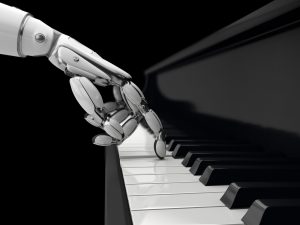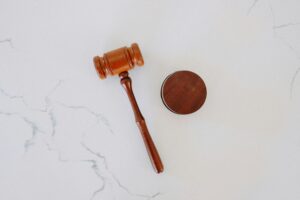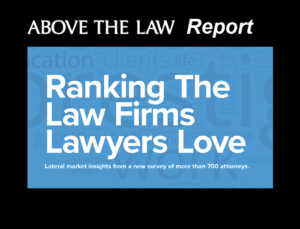Endel And The Coming Robot Copyright Reckoning
All of this app-generated music raises the question of whether copyrights attach to AI-created works and if so, to whose benefit they inure.
 A monumental record deal was struck earlier this year. You can picture the archetypal scene as it has played out so many times: the flashy recording-biz exec sitting at a corner table at a Soho House (pick-your-city) surrounded by silver trays full of various powders and highball glasses overflowing with jack-and-cokes, pitching the hot up-and-comer on an exploitative set of contractual obligations and then proffering a gilded pen for the purposes of inking the deal.
A monumental record deal was struck earlier this year. You can picture the archetypal scene as it has played out so many times: the flashy recording-biz exec sitting at a corner table at a Soho House (pick-your-city) surrounded by silver trays full of various powders and highball glasses overflowing with jack-and-cokes, pitching the hot up-and-comer on an exploitative set of contractual obligations and then proffering a gilded pen for the purposes of inking the deal.
But the hot up-and-comer here is not quite able to wield a pen. We are considering not a pop star or a country singer or a rapper with “Li’l” in their name. Instead, we are considering Endel, who, unlike most record-label signees, is a German-based algorithm.
Here we arrive at a major inflection point. As humanoid musicians with their instruments and need for health care have become too much of a financial burden, the powers that be have turned to the robots to do the dirty work of creation. Coincidentally, Amazon, one of the companies fighting to decrease the percentage of streaming revenues that must be paid to artists, is an investor in Endel through its Alexa Fund.

Law Firm Business Development Is More Than Relationship Building
Endel’s press release notes that it is the first “app-as-an-artist” to release music on the major streaming services, and it has already turned out five albums with plans to release 20 more this year. All of this app-generated music raises the question of whether copyrights attach to artificial intelligence-created works and if so, to whose benefit they inure.
The Copyright Office has already weighed in, heading this issue off at the pass. It recently updated its Compendium, which is used in the registration review process, to confirm that works “must be created by a human being” in order to be approved for registration. This caveat, notably, is limited to works that are entirely machine-generated.
The USCO’s approach contravenes that of the United Kingdom, which addressed this question way back in 1988 with its Copyright, Designs, and Patent Act. Under that law, the issue of whether the author of a work was human is of no import and a work that is entirely machine-created is copyrightable with the copyright residing with the creator of the machine.
In the landscape between these positions there are a number of AI-art angles that lawyers, musicians, and industry folk have been bandying about of late as everyone tries to make sense of life among our new robot overlords.
Sponsored

Luxury, Lies, And A $10 Million Embezzlement

Law Firm Business Development Is More Than Relationship Building

AI Presents Both Opportunities And Risks For Lawyers. Are You Prepared?

Curbing Client And Talent Loss With Productivity Tech
The issue, though, is not entirely new. AI is already used in many artistic disciplines and we do not hesitate to acknowledge that AI-assisted art is copyrightable. Animators, for example, do not always draw every cell by hand and now instead rely on a computer program to expedite the process. Yet, everyone agrees that animation is protectable. But, as AI becomes more powerful and can usurp more and more of the creative process, the question of who owns which part of the copyright becomes more stark.
A not-so bright line seems to demarcate two worlds: artwork created by humans with the aid of AI and artwork created by AI with the aid of humans. The Ninth Circuit has already taken a position as to how much human is enough human, issuing an opinion way back in 2017 on the topic. The Circuit acknowledged in Design Data Corp. v. Unigate Enter., Inc. that authorities “suggest that the copyright protection afforded a computer program may extend to the program’s output if the program ‘does the lion’s share of the work’ in creating the output and the user’s role is so ‘marginal’ that the output reflects the program’s contents.” While “lion’s share” may not be the easiest standard to quantify, it does teach us that whichever “author” bears this burden will reap the copyright rewards.
Another copyright case, Urantia Foundation v. Maaherra, provides additional insight into the question of whether humanity must play a major role in the creation of a work for it to be protectable. In that case, the court reviewed the Copyright Act and found that nowhere in its text does it explicitly “require human authorship.” Given the textualist approach to the Copyright Act recently applied by the Supreme Court, this would certainly support copyright claims by the engineers behind the AI-art-creating programs.
There are a number of competing theories as to where the law will and should go in regard to AI-art and copyright. For example, we can look to the party that bears accountability for the risk of the technology as the one that should reap the benefit of AI-art. We assume without inquiry that when a self-driving car causes an accident it is the company behind the car that is responsible. Perhaps the company behind the AI-art, which bears the cost of innovation and the risk of problems, should also reap the intellectual property benefits. If we operate under the assumption that the Copyright Act was promulgated to encourage the creation of new artistic works, as we should, this approach seems viable.
Particularly because denying copyright protection to AI-art would present a free-riding problem. If one company invests heavily to create an AI-art-creating program with the capability to draft fantastic screenplays, a movie studio could come along and create films based on those screenplays with no requirement that they compensate the “author.” This would not serve the purposes of the Copyright Act.
Sponsored

Curbing Client And Talent Loss With Productivity Tech

Ranking The Law Firms Lawyers Love
The work-for-hire doctrine also provides a framework for ascertaining who should hold the copyrights for AI-art. In essence, we would apply the doctrine to human and robot employees alike, with the copyrights for their work, to the extent they are created within the scope of their employment, inuring to the benefit of the company. This would encourage investment in innovation and result in the creation of new works.
Another approach acknowledges that copyright protection already exists for the source programs that would be run to create AI-art, and, per 17 USC 106(2), any works “based on” that source program would be derivative works. The definition of “derivative works” in the Copyright Act includes any “elaborations” on the original work, which could encompass AI-art, and the cases referenced above seem to support this approach, so long as the program does the “lion’s share” of the work.
Finally, the law protects the creative selection and arrangement of otherwise generic or basic elements. While these elements are normally public domain materials, this doctrine could be expanded to protect only the selection and arrangement (and not the underlying elements) of an AI-produced work that draws from a copyrighted data set.
In Endel’s case, they apparently brought in a team of lawyers to drill down on the question of who, if anyone, should be designated as the authors for their AI-generated songs. And, after much consternation, they came to the conclusion that it was the software engineers that should be credited as the authors. Should Endel one day file a copyright claim against a third party that streams Endel’s songs without consent, you can bet that this accreditation will be the subject of much scrutiny during the litigation.
 Scott Alan Burroughs, Esq. practices with Doniger / Burroughs, an art law firm based in Venice, California. He represents artists and content creators of all stripes and writes and speaks regularly on copyright issues. He can be reached at [email protected], and you can follow his law firm on Instagram: @veniceartlaw.
Scott Alan Burroughs, Esq. practices with Doniger / Burroughs, an art law firm based in Venice, California. He represents artists and content creators of all stripes and writes and speaks regularly on copyright issues. He can be reached at [email protected], and you can follow his law firm on Instagram: @veniceartlaw.







